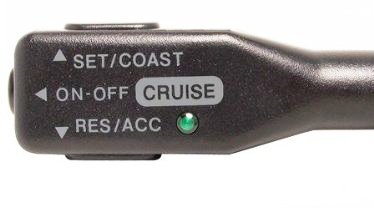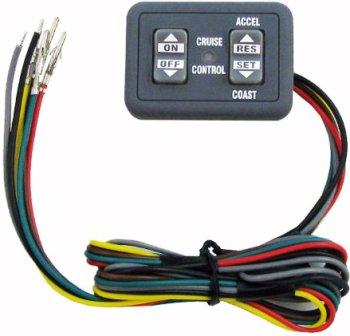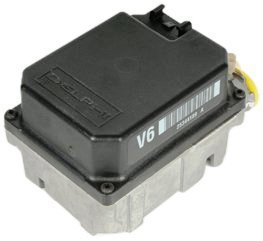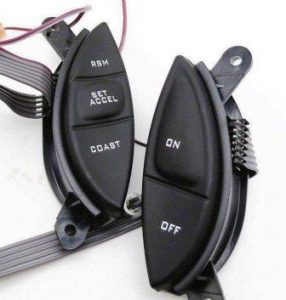
People can own a car for years without exploring all of the cruise control system features available to them. In fact, city dwellers with commutes that rarely reach over 25 mph go for long periods of time without using the cruise control.
Here we’ll take a look at some of the most underutilized cruise control features baked into this handy automotive option. Of course, the owner’s manual remains the best source of model specific operational Instructions. And get a shop service manual for the cruise control system diagnostic and repair procedures.
Turn the Cruise Control Off

Before we get into the intricacies of how the cruise control system works and seldom used features, let’s discuss when to turn off the system. In the owner’s manual they outlined situations in which you should keep the cruise control in the off position. Poor road conditions top this list. These situations include icy roadways and during rainstorms.
In addition, you don’t want to set the cruise control system in city driving situations. Car manufacturers recommend setting the system on straight open roads. When these highways and byways start to twist and turn or go up and down mountains, it’s time to reach over and turn off the system. Winding roads and traffic jams round out the list of reasons to live without the convenient automated accessory.
Misunderstood Cruise Control System Features

All cruise control accessories have minimum speed settings. However, the exact number varies between automotive manufacturers. Generally speaking, the lowest possible setting on most automobiles starts at 20 – 25 mph. The reason for selecting this magic number point towards the standard residential speed limit found in most cities.
If you have trouble setting the cruise control at low speeds your factory set threshold is higher. In addition, it might be time to check the accuracy of your speedometer. We have different rules for automobiles equipped with a manual clutch operated transmissions. Some of these automobiles require a gear position higher than second or third to set the speed.
Another cruise control system feature that’s misunderstood is the brake switch that disengages the system. These switches are purposely set on the sensitive side as a precaution. Drivers that hover their foot over the brake pedal can find the cruise system disengaging often. Also note the cruise won’t set with the parking brake applied. If this isn’t fully released the system won’t engage. Finally, advanced automobiles can include stability control systems, traction control safety features and anti lock brake systems. If any of these systems become active the cruise control is automatically turned off.
Basic Cruise Control Operation
This should be without saying, but you need to familiarize yourself with the function of all of the cruise control buttons before you hit the road. Yes, it sounds like common sense, but all too often people try to figure out the location and function of the individual switches at highway speed. This is dangerous and there’s no reason for it.
Most modern automobiles include steering wheel controls with small writing indicating each individual switches job. You don’t want to try to read this for the first time at 65 mph on the Interstate. Older automobiles include the cruise controls on the turn single lever. Cruise control systems include a separate power button and then three or four control buttons.
The most popular button remains the set speed button. You simply hit the button while maintaining the speed you wish to hold. If everything is working correctly, the system activates and retains the setting. The second most popular button on the standard cruise control becomes the resume switch. After you’re forced to tap the brakes and knock the cruise control off, this is this what you’ll push to reset your previous set speed. Note that on many popular systems the resume button when pushed upward gains 1 mile per hour with each push. This lets the driver hone in on the perfect speed for their present situation.
Advanced Cruise Control System Features
Many drivers don’t realize that the standard cruise control system comes with a passing feature. On long desolate roads that cut through small towns you might come up on slower traffic. If you have your cruise control set and all you have to do is push down on the accelerator to pass the vehicle. With the pass completed the set speed is retained by the cruise control memory. There’s no need to turn it off and then back on after passing.

Cruise control operation up and down hills can be unsettling. Most factory installed systems maintain their speed on steep hills. This can provide a strong and sometimes harsh acceleration to maintain the speed up the grade. Be aware if the slope becomes steep enough the transmission might automatically shift to a lower gear on its own. The transmission control module determines gear selection using an engine load sensor.
After reaching the apex of the hill, going down the steep slope on the other side can also become unsettling. Many drivers aren’t aware that cruise control maintains the speed using the accelerator functions. Most companies don’t tie into the automobiles brake system. This means the driver needs to maintain the speed on the down slope using the brake pedal. When the automobile reaches a level road the cruise control picks up its previously set speed.
Turning Off the Cruise Control System

Most of us realize that when you want to disengage the cruise control system there’s more than one way to accomplish this. Of course, tapping the brake pedal remains the most popular way of turning it off. But what if the brake switch malfunctions and the cruise control stays engaged. This is the reason to understand the other methods of turning off the cruise control. With that said, this situation is highly unlikely.
Remember, you can always turn off the cruise control system by turning off the power button. All cruise control systems also have a cancel override button. The emergency brake mechanism is another way to turn off the speed control system. The emergency brake uses its own separate switch independent from the brake pedal switch. Even though the brake pedal mounted switches remain reliable it’s nice to know that you can slightly apply the parking brake to turn off the cruise control system in an emergency.
